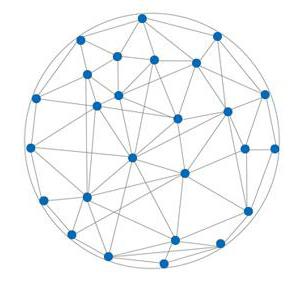Subsidiaries are business entities that are created and registered by parent organizations.
Definition of concepts
Subsidiaries are legal entities created by other (parent) organizations that vest them with certain powers and functions, and also provide their property for use. It is also worth noting that the main company draws up the charter, and also appoints the management of the newly issued.
Subsidiaries are one of the most common business expansion mechanisms. When deciding whether to scale up production or entering new markets, managers often resort to such a mechanism.

Distinctive features
So, the management decided to create an accountable company. Such a company is a subsidiary. It has a number of features that distinguish it from other organizations, namely:
- conducting independent economic activity in accordance with the charter;
- relative independence of management in matters relating to personnel and marketing policies;
- significant distance from the parent company;
- the ability to independently build relationships with government agencies, partners, competitors, suppliers, as well as customers.

What is a branch
A branch is an organization outside the head office that has limited authority and responsibility. It is worth noting that he is structural unit and not an independent legal entity. The branch does not have the right to act on its own behalf, and is also not endowed with its own material means.
Branches and subsidiaries
Subsidiaries and branches are often confused, although these concepts cannot be equated. The main difference between these organizations is their empowerment.
Subsidiaries are completely independent organizations. Despite the fact that they are fully accountable to the parent companies, their managers have full authority regarding managerial decisions, and also bear full responsibility for their actions. They are also characterized by their own charter. It can be said that from the moment the charter is drawn up and the head is appointed, the subsidiary receives almost complete independence in terms of personnel and marketing policies, as well as other activities.
Speaking about the branch, it is worth noting that it is absolutely dependent on the head office. In fact, it is controlled by him. Such an organization does not have its own charter, which means that all issues regarding production, advertising and personnel are decided by the highest management.
If we are talking about the global expansion of production, then it would be advisable to organize subsidiaries. In the case when the territorial spread will be small, it is worth giving preference to branches.

Creation of subsidiaries
In order to open a subsidiary, you need to go through the following procedures:
- it is necessary to draw up the charter of the new organization, as well as clearly distribute the shares of capital between owners;
- the director of the parent company signs a document stating the precise coordinates and contacts of the subsidiary;
- the organization must receive certificates from the tax, as well as from credit organizations about the absence of any arrears;
- then it’s the turn to fill out a special registration form;
- at the last stage, the chief accountant should be appointed, after which the documents are sent to the tax office, where the decision is made on the registration of the subsidiary.

Absorption
You can create a subsidiary not only from scratch, but also by absorbing other organizations (by mutual agreement, on account of debts or in other ways). In this case, the procedure will look as follows:
- To begin with, it is worth deciding whether the production of the enterprise will be reoriented to the standards of the parent or whether it will remain in the same direction;
- the next step is the development of statutory documents;
- you should find out the validity of the previous details of the enterprise or assign it new ones;
- then the director (or manager) is appointed, as well as the chief accountant, on whom responsibility for the management of the subsidiary is subsequently transferred;
- then it is necessary to contact the tax and registration authorities with an appropriate application for registration of a new enterprise;
- after the registration certificate is received, the subsidiary can work in full.

How is control
Control over the activities of subsidiaries can be carried out in the following ways:
- monitoring - involves the continuous study and analysis of information contained in the reporting documents of the "daughter";
- periodic mandatory reports of directors of subsidiaries to senior management on performance;
- collection and analysis of enterprise performance indicators by the efforts of employees of the internal control unit;
- involvement of third-party auditors in the study of the state of affairs and financial flows in the subsidiary;
- periodic audits with the participation of the regulatory bodies of the parent company;
- also quite important aspect are inspections of state control bodies.

Benefits of Subsidiaries
A company is a subsidiary if it can be described as a relatively independent organization, which is accountable to the parent company. This form has a number of undeniable advantages:
- bankruptcy of a subsidiary is practically impossible, since the main organization bears responsibility for all debt obligations (the exception can be considered the case when the main company itself suffers serious losses);
- all responsibility for the budgeting of the subsidiary, as well as the covering of its expenses, is assumed by the head office;
- a subsidiary may use the reputation as well as the marketing attributes of the parent.
It is worth noting that the claimed benefits relate specifically to the governing bodies of the subsidiaries.
Disadvantages of subsidiaries
We can talk about the following disadvantages of "daughters":
- since the product range and production technology are clearly dictated by the parent organization, the management of the subsidiary will have to forget about ambitions regarding innovation, rationalization, as well as expansion of scale;
- the leaders of the subsidiary cannot freely dispose of capital, since the directions of its use are clearly outlined by senior management;
- there is a risk of closing the enterprise in the event of the bankruptcy of the parent company or the ruin of other subsidiaries.
How is management
Management of subsidiaries is carried out by a director who is directly appointed by the senior management of the parent company. Despite the granting of rather broad powers, it is impossible to speak of complete independence, since the "daughter" is a structural unit of the parent company. At the beginning of the reporting period, the manager “descends from above” the budget, the implementation of which he will subsequently have to report.In addition, the "daughter" works in accordance with the charter, which is drawn up at the main office. Top management also monitors the implementation by its department of all legislative and legal norms.
What is the responsibility of the parent organization
According to regulatory documents, a subsidiary is a separate legal entity. Moreover, it has its own capital, which makes it possible to independently bear responsibility for its debt obligations. Therefore, we can say that the "daughter" and the parent company have nothing to do with each other's debts.
Nevertheless, the legislation has identified several cases that lead to liability on the part of the parent organization, namely:
- If a “daughter” concluded a certain transaction as directed or with the participation of the parent company. If this fact is documented, then both entities are liable for debt obligations. In case of insolvency of the subsidiary, the entire cargo passes to the parent organization.
- Bankruptcy of a subsidiary may also result in liability on the part of the parent company. In this case, insolvency should occur precisely due to the execution of orders or instructions of the second. If the property of the subsidiary is not sufficient to cover all debts, the parent company will be liable for the remaining share.
Despite the fact that the subsidiary has a fairly high level of freedom and broad powers, its financing is carried out by the parent organization, which also determines the direction of production activity. Also, despite the relative independence of the "daughter", the head office constantly monitors its financial and marketing activities.
